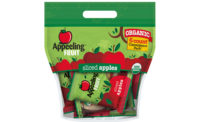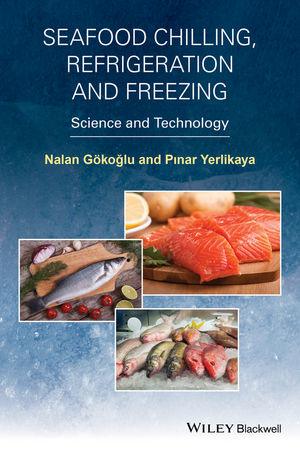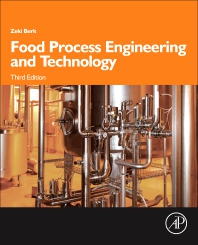Chelsea, Mass., soup processor grows, balances automation with artisan culinary craft.

Before there was a Food Network, before the emergence of the gastro blogger, before the pursuit of all things culinary became a national obsession, there was a small industrial kitchen in Revere, Mass., where Jerry Shafir -- a newly minted business-school graduate with a keen palate and plenty of foodservice savvy -- had an idea.
Shafir’s idea was that even the most discerning chefs would menu prepared soups if they could be sure that those soups were made with the same “real-food” ingredients and time-tested cooking techniques they would use themselves.
At the time, this was a radical notion. But in today’s food-forward era, it seems uncannily perceptive. And as the guiding philosophy behind Kettle Cuisine-the culinary-inspired soup company that Shafir founded in that Revere kitchen 25 years ago-the idea has proven to be one whose time has come.
Artisan ahead of its time
In 1986, Kettle Cuisine’s initial product roster featured seven core soups: New England Clam Chowder, Cream of Broccoli, Minestrone, Tortellini with Chicken Stock, Vegetable Barley, Tomato Rice and Hungarian Mushroom-nothing glitzy; nothing exotic; just great tasting soups made with real food ingredients and traditional artisan cooking techniques.
But it is precisely that commitment to timeless quality that has helped Kettle Cuisine weather the past quarter century of shifting culinary trends.
Those ideas of using real, recognizable ingredients, careful preparation and slow cooking, it seems, have finally come full circle. The foods that enjoy the highest esteem today are those with the deepest roots in tradition. In that sense, Kettle Cuisine hasn’t so much kept pace with the culinary mood as the mood has caught up with Kettle Cuisine. That’s because the company was “artisan” before “artisan” was fashionable.
Today, as Kettle Cuisine has grown to offer more than 50 varieties of soups, chilis, chowders and stews, some traditional and others decidedly not-so, the company is committed to not deviating from its artisan principles. That means sticking with small batches and minimal processing, even in an age of advanced automation, economies of scale and the pressure that many companies feel to squeeze every efficiency from production.
How does Kettle Cuisine square the artisan circle in an automated age?
“With years of practice,” says Shafir, “We have learned to be artisan cooks at a significant scale.”
Far from impeding growth, the company's hands-on approach has fostered expansion by giving customers a product that keeps them coming back. Thus, the company’s success reinforces its decisions.
“As we grow, we understand what was behind that growth, and we stick to that path to keep on growing," says Shafir. "At the core, it continues to be about product integrity and consistently making great products that our customers can proudly serve.”
Simply put, at Kettle Cuisine making soup has always and will always be much more than simply assembling ingredients and turning up the heat.
“You have to build things,” says Volker Frick, Kettle Cuisine's executive chef. “You add ingredients at the right time and you let the flavors develop.”
When he stirs curry spices into a kettle of hot oil, for example, “these seasonings have the ability to blossom and bloom,” he explains. “Then you have to act very quickly to cool it down. It’s through these steps that we build our soups.”
And while soup bases and off-the-shelf seasonings could subtract inconvenient steps from the process, they’re not in Kettle Cuisine’s toolkit.
“Just start with making the right stock. It’s a slow process to get it going,” he says, but it’s worth it because after all, great soups always start with great stocks."
Frick continues, “We slowly braise beef and carefully sauté vegetables before they go into our stews.” It’s not the easiest way of making soup, but nobody said great flavor comes easily."
This intricate cooking process is guided by an unwavering philosophy.
“We philosophically are not capable of putting forward products that are not the best they can be,” he continues. “We believe the only way to do that is with a continued investment in treating food the way it should be treated every step of the way. We overcome the challenges by getting better at doing things the right way, as opposed to looking for shortcuts.”
All about the ingredients
Kettle Cuisine’s ingredient philosophy comes through in the company’s sourcing practices.
“Not a lot has changed these past 25 years when it comes to choosing and preparing ingredients,” Shafir says. Indeed, there is not a lot of difference between Kettle Cuisine’s pantry and what you would find in a domestic kitchen. Shafir continues, “If you can’t buy it at your local market, it’s likely not in our soups.”
“We still firmly believe in bringing in top-quality raw ingredients from as close to the source as possible, preparing them by hand, cooking them properly and adding them to the kettles at just the right time,” Shafir says.
While many food companies have been tempted by the ease and convenience of using fully prepared, processed ingredients, Kettle Cuisine stays true to delivering the benefits associated with using raw ingredients straight from farms, dairies, ranches and fisheries.
“Everything is coming in so fresh,” says Frick and rapid turnover ensures that it stays that way. “The cream we purchase gets used the same day,” he points out. “The clams we source are gone in a day. That little bit of paprika? It’s gone in two weeks. It’s that freshness that is the foundation of great tasting products.”
None of this would be possible without the support and commitment of Kettle Cuisine’s dedicated suppliers.
“Because of the importance of ingredients, we work very closely with all of our suppliers to build mutually beneficial partnerships,” Shafir says. “We are willing to pay premiums for consistently great products and service that meet our high standards.”
Smart growth – still cooks in the kitchen
The company insists that its standards have risen not in spite of growth but because of it. After all, the resources that come with success have improved Kettle Cuisine’s ability to monitor and enforce quality, safety and their commitment to premium quality, all natural foods.
Visit the Kettle Cuisine campus and you will still see cooks in the kitchen.
“Every cook is at the kettles tasting,” Frick says. “That’s an important culinary assurance measure that we will never surrender.”
Frick, whose European training and traditional culinary mindset have set the tone at Kettle Cuisine since his arrival in 1992, has played a pivotal role in formalizing Kettle Cuisine’s culinary discipline. In addition to building upon Shafir’s founding philosophy of cooking real foods with attention and care, he has drafted highly detailed procedures and provides comprehensive training for all the cooks in the kitchen.
To this day, Frick still wears the mantle of chief culinary architect and flavor enforcer. You wouldn’t know it by talking to him, though.
“I’m a cook,” Frick says. “And as a cook, you have to wear many different hats.”
But how is the company able to support the strong, significant growth that they have enjoyed and still maintain their artisan focus? By making smart investments and smart trade-offs. Shafir brings the focus back to quality.
“We will move to automation if we believe that it improves product quality attributes,” he says. “But we never move to automation solely for efficiency’s sake.”
He cites the company’s chilling protocol as an example.
“Our products are better if we can chill them from a hot fill as quickly as possible. So if we can invest in getting the timing just right during chilling” - even if that means automation - “we will.” By contrast, they still peel ginger by hand “because we believe the quality is significantly better than any pre-peeled product we have ever tested.”
In other words, accommodations to scale that the company makes as it settles into its mid-twenties come at what Shafir calls “the back end”: packing, chilling and shipping.
“We started 25 years ago in what was essentially a garage with a couple of kettles and a manual chilling system,” he says.
Today, Kettle Cuisine's plant not only is larger at 60,000 square feet, but outfitted with more modern equipment.
“While our processes remain highly manual,” Shafir says, “we do have much more modern kettles, filling equipment, cooling systems and packaging equipment.”
Building the portfolio, one variety at a time
From early on, Kettle Cuisine has been at the forefront of incorporating ingredient and flavor trends into new recipes in order to continuously expand their portfolio and be sure they offered something for everyone.
Of course, a twist can turn into a whirlwind so in addition to the classics, the Kettle Cuisine lineup now touches down at all the global gastronomic hotspots, bringing in such titles as Thai Chicken with Red Curry, Mediterranean Grilled Eggplant and Portuguese Kale Soup with Linguiça. The company simply couldn’t satisfy current cravings without them.
“There are so many people watching the Food Network and traveling to experience these foods and flavors," says Frick.
Their taste for adventure gives the culinary crew license to stretch in choosing profiles from far-reaching places.
“It makes our job a lot of fun, actually," Frick adds. “There’s really no cuisine that we can’t tap into.”
Kettle Cuisine has also been a leader in meeting the evolving dietary preference and requirements of consumers so that their customers are able to confidently serve all of their patrons. The company has long offered vegetarian, vegan, dairy-free and lowfat varieties to its customers and was recently the first foodservice soup company to offer an extensive selection of certified gluten-free soups.
The company’s entry into the gluten free arena came from a more personal motivation as Shafir’s daughter has lived with Celiac Disease, the condition that requires a gluten-free diet, for more than 20 years. Recognizing how limited the prepared-food options for celiac consumers were, the company took its cue from FDA’s formalized gluten free definition and addressed this unmet need.
“Our strict commitment to unprocessed ingredients, segregated preparation and cooking and our testing of every batch down to the 5 parts per million level put us in an elite position to deliver this important health and wellness attribute,” Shafir says.
What’s more, he insists the soups “do not compromise at all in taste or texture.”
New directions
As wedded to tradition as Shafir, Frick and the rest of Kettle Cuisine crew may be, they recognize the need for change when it arises, as was the case in 2009 when the historically refrigerated soup company introduced soups in a frozen format.
“Developing our frozen capability was important for us because we explored many ways of expanding our geographic reach beyond the Northeast, and the only path we were comfortable with was moving from an exclusive focus on refrigeration to freezing,” Shafir says. “After extensive testing, we found that we could make frozen soup with no noticeable compromise in flavor or texture, whereas alternative paths of extending shelf life compromised both the purity of the ingredients and the finished taste. Now in our 25th year, we are finally able to share our products, services and philosophies with customers across the entire country. ”
As Frick notes, the task was a matter of minor tweaks to a small set of ingredients and procedures-but always within the framework of Kettle Cuisine’s core values.
“For example, you use rice starch instead of wheat starch,” he says. “You just formulate the soups in a fashion that allows them be frozen, and once they’re reheated, they have the same premium taste and texture as their refrigerated counterparts.”
And that, in the end, is the real bottom line, isn’t it?
As Frick points out, the company is called Kettle Cuisine for a reason: “Cuisine means you’re cooking. This is nothing but a large kitchen. You may not be able to lift the pots and pour, but the cooking is the same. And for me, that’s what cuisine is all about.”







